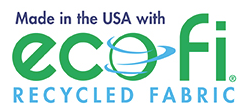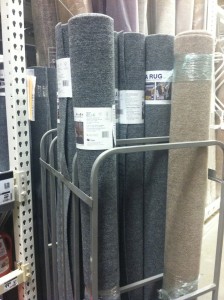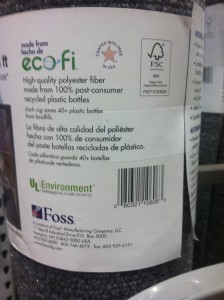 I have made it a habit, in recent years, to use my visits to retail establishments as informal “market surveys” in support of my business. When I shop for groceries, office supplies, and the many other “necessaries” of modern living, I am always on the lookout for familiar trademarks of the programs I work with every day – FSC, PEFC, and SFI. I also look for new and less familiar “green” labels and for novel combinations and unusual claims. I have been doing this for long enough that the habit has becoming unconscious, and occasionally annoying to friends and family who might be with me!
I have made it a habit, in recent years, to use my visits to retail establishments as informal “market surveys” in support of my business. When I shop for groceries, office supplies, and the many other “necessaries” of modern living, I am always on the lookout for familiar trademarks of the programs I work with every day – FSC, PEFC, and SFI. I also look for new and less familiar “green” labels and for novel combinations and unusual claims. I have been doing this for long enough that the habit has becoming unconscious, and occasionally annoying to friends and family who might be with me!
Not long ago, I was browsing through the aisles of a prominent, “big box” building supply retailer near my home in Maine. The reason for my visit was quite ordinary: I was looking for a carpet to put in my office. Building supply retailers – especially the “big box” types – often provide interesting and educational labeling examples to look at. But on this trip, I was looking for a carpet; and carpets aren’t made from wood, are they?
 My eye was drawn towards this floor display of rolled up carpets. I was mostly interested in the fact that they were of the size I was looking for, and were offered at an attractive price. But it didn’t take long for my attention to be drawn to the labeling. Prominently displayed at the top is an artfully-designed, green logo for a product called “eco-fi” – apparently a brand of polyester fiber make from 100% post-consumer recycled plastic bottles. “eco-fi” appears to be a brand trademark belonging to a
My eye was drawn towards this floor display of rolled up carpets. I was mostly interested in the fact that they were of the size I was looking for, and were offered at an attractive price. But it didn’t take long for my attention to be drawn to the labeling. Prominently displayed at the top is an artfully-designed, green logo for a product called “eco-fi” – apparently a brand of polyester fiber make from 100% post-consumer recycled plastic bottles. “eco-fi” appears to be a brand trademark belonging to a
company called Foss Manufacturing located in New Hampshire. To the the “eco-fi” logo, is another prominent logo (a red star) declaring the product to be “Crafted with Pride in USA”. To the right of the “USA” logo (& slightly larger) we find (you guessed it!) the familiar FSC logo.

My auditor’s eye tells me that this use of the FSC logo may be technically correct. Nonetheless, I find it a bit troubling. The “fine print” on the FSC label includes the phrase, “paper from responsible sources”. This is intended to make it clear that the “FSC Mix” claim applies only to the paper product (i.e. the label itself) that the label is printed on. This is asking quite a lot from a casual consumer, though. In my opinion, the prominent use of of this label is likely to invite misunderstanding. I doubt very much that this is intentional, but I still consider it rather bad practice. The FSC certification system should have required that this label use be reviewed and approved by the certifying company (in this case Rainforest Alliance). I wonder if that happened in this case.
 One of the interesting – and often overlooked – features of the FSC labeling system is the FSC license code which is included in every on-product label. You can find it at the bottom of this one, under the “paper from…” statement. FSC maintains an online database (info.fsc.org) where we can look up these numbers and learn who is responsible for them. If we look up FSC C103525, this is what we find. The label was produced be one of the members of an enormous (200+ members) consortium of commercial printers called the Regional Certificate Affiliate Group, Inc. I would like to learn more about this group certificate. When I do, I will be sure to share it here.
One of the interesting – and often overlooked – features of the FSC labeling system is the FSC license code which is included in every on-product label. You can find it at the bottom of this one, under the “paper from…” statement. FSC maintains an online database (info.fsc.org) where we can look up these numbers and learn who is responsible for them. If we look up FSC C103525, this is what we find. The label was produced be one of the members of an enormous (200+ members) consortium of commercial printers called the Regional Certificate Affiliate Group, Inc. I would like to learn more about this group certificate. When I do, I will be sure to share it here.